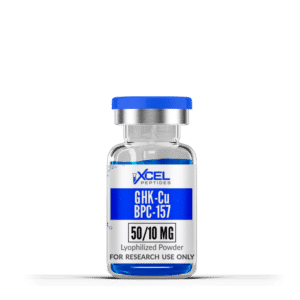GHK-Cu / BPC-157 Peptides painless GHK-Cu injections
Combining GHK-Cu peptide and BPC-157 reduces injection site pain reactions (ISR) from GHK-Cu
Probably the most popular and common reason to Combining GHK-Cu peptide and BPC-157 is to reduce the Injection Site Reaction seen in some lab animals and test subjects that research with GHK-Cu peptide.
How can we mention the combination of GHK-Cu peptide and BPC-157 peptide without mentioning the Godmother of the GHK-CU / BPC protocol painless GHK-Cu injections for your lab animals. Her name is Angela otherwise known as Fine-Tale2468 on Reddit, AKA Anela (the Anela Protocol) painless GHK-Cu injections for your test subject. Her protocol for painless GHK-Cu injections for your lan animal along with a GHK-Cu topical protocol is what has motivated many brands to design peptide blends based on her years of research.
Research on the combination of GHK-Cu peptide and BPC-157 peptides in addressing injection site pain reactions seen in may lab animals from GHK-Cu is a topic that is still in its early stages, and there is limited information available. However, based on the potential properties of these peptides, there are hypotheses that suggest a combination may mitigate or reduce injection site issues in lab test subjects associated with GHK-Cu administration.
-
- Anti-Inflammatory Properties of BPC-157:
-
- BPC-157 is known for its anti-inflammatory effects. It has been studied for its ability to modulate inflammatory responses, reduce swelling, and promote healing of injured tissues in research settings on lab animals.
-
- Inflammation at the injection site is a common cause of pain and discomfort in lab animals. If BPC-157 is administered alongside GHK-Cu, its anti-inflammatory properties may counteract the inflammatory response triggered by GHK-Cu injection.
-
- Anti-Inflammatory Properties of BPC-157:
-
- Tissue Repair and Regeneration:
-
- Both GHK-Cu and BPC-157 are associated with tissue repair and regeneration. GHK-Cu is known for its role in promoting collagen synthesis and tissue regeneration, while BPC-157 specifically focuses on the healing of various tissues.
-
- Combining these peptides may facilitate faster healing at the injection site, potentially reducing the duration and intensity of pain that is seen in the lab with research subjects.
-
- Tissue Repair and Regeneration:
-
- Local Anesthetic Effects:
-
- BPC-157 has been studied for its potential local anesthetic effects, which may contribute to pain relief at the injection site in the lab with research subjects.
-
- If administered alongside GHK-Cu, BPC-157’s local anesthetic properties may alleviate or minimize the pain experienced during and after injection your lab animal.
-
- Local Anesthetic Effects:
-
- Modulation of Nerve Growth Factors:
-
- GHK-Cu has been investigated for its impact on nerve growth factors. It may influence the expression of genes related to nerve regeneration.
-
- When combined with BPC-157, which also plays a role in nerve and tissue repair, there may be a synergistic effect that helps to modulate nerve-related responses and reduce pain sensations.
-
- Modulation of Nerve Growth Factors:
-
- Overall Tissue Health Improvement:
-
- Both peptides contribute to overall tissue health, and their combined effects may lead to improved skin integrity and reduced sensitivity at the injection site of lab animals.
-
- Enhanced tissue health may contribute to a more favorable environment for GHK-Cu absorption, potentially minimizing adverse reactions.
-
- Overall Tissue Health Improvement:
It is important to note that while these hypotheses are based on the known properties of GHK-Cu and BPC-157, clinical trials and further research are needed to validate the effectiveness of this combination in reducing injection site pain in lab test subjects use. The specific mechanisms through which these peptides interact and their impact on pain responses require more in-depth investigation.
We have an amazing GHK-Cu and BPC-157 blend in the precise 5:1 ratio (50mg GHK-Cu, 10mg BPC-157 per vial, that is so popular among peptide researchers. Be sure to check it out below:


How would one dose this for research purposes?